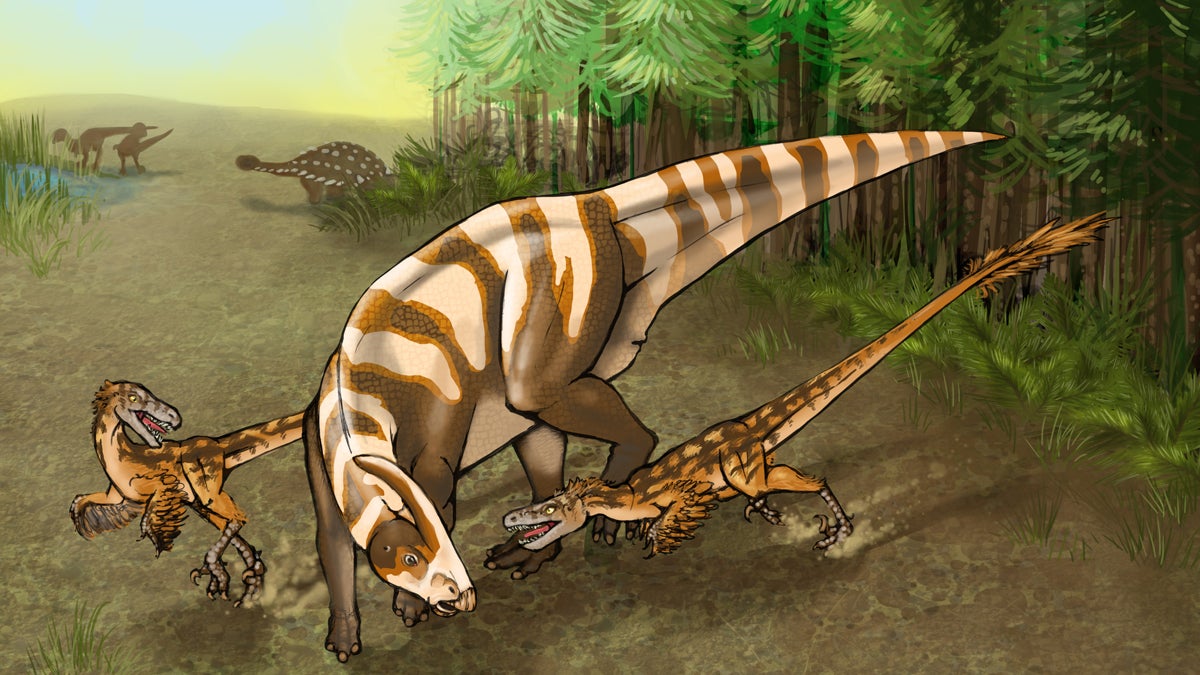Newly discovered raptor species could easily sniff out prey, Penn scientist finds

Two Saurornitholestes sullivani raptors attack a subadult hadrosaur Parasaurolophus tubicen.(Illustration by Mary P. Wiliams)
A University of Pennsylvania graduate student has identified a new species of dinosaur that lived 73 million years ago in what is now New Mexico.
Steven Jasinski, who also serves as the acting curator of paleontology and geology at the State Museum of Pennsylvania in Harrisburg, said the creature was small – it stood only about 3 feet tall — but would have been a fearsome predator.
“It had a slightly elongated face with a lot of small, but very sharp, serrated teeth inside,” he said. “It also had large claws on both its hands and feet that it could have used to take down prey.”
But its special secret for success? Looking at skull fragments, Jasinski said he noticed an extra large space for the olfactory bulb of the brain, indicating this dinosaur had an excellent sense of smell.
“It was far and away [a] better smeller,” he said, “than other members of its group, including velociraptor”—the dinosaur of “Jurassic Park” infamy.
A good sniffer might mean the dinosaur was a scavenger, but could also suggest it tracked larger prey in packs.
“Chances are this would have really helped it track down prey over long, long distances,” said Jasinski. “These guys would have been fast enough that they could have run down anything that they got close to.”
The dinosaur, which Jasinski named Saurornitholestes sullivani after his former mentor and the fossil’s discoverer, Robert Sullivan, joins about nine other known raptor species. It is the first found in the southern United States.
WHYY is your source for fact-based, in-depth journalism and information. As a nonprofit organization, we rely on financial support from readers like you. Please give today.

